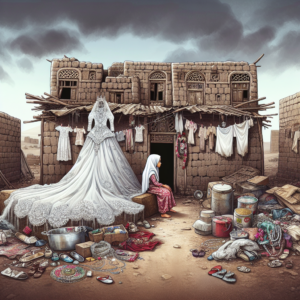Breaking the Cycle: Ending Child Marriage in Developing Nations
Introduction
In many developing nations, child marriage continues to be a pervasive and deeply rooted issue, violating the rights of millions of girls around the world. Child marriage refers to a legal or customary union where one or both parties involved are under the age of 18. This harmful practice not only deprives girls of their childhood but also impedes their access to education, healthcare, and opportunities for personal development. To address this pressing global concern, it is crucial to understand the reasons behind child marriage, its devastating consequences, and the various strategies employed to break this destructive cycle.
Causes and Drivers of Child Marriage
Child marriage is a complex issue driven by a combination of social, cultural, economic, and religious factors. Poverty plays a significant role, as families often marry off their young daughters in exchange for dowry or economic stability. Cultural and traditional norms, perpetuated by societal pressures and gender inequality, also contribute to the prevalence of child marriage. In some cases, girls are seen as economic burdens or property, with marriage considered a strategy to ensure their protection or secure future alliances between families. Furthermore, limited access to education and healthcare perpetuates a cycle of vulnerability, as girls who drop out of school are more likely to be married early.
Consequences of Child Marriage
Child marriage has severe and long-lasting consequences for young girls. When girls are married at an early age, they often face high risks of complications during childbirth due to their bodies not being fully mature. This results in increased rates of maternal and infant mortality. Moreover, child brides are more susceptible to domestic violence, sexual exploitation, and forced labor, with limited ability to negotiate safe sexual practices or make decisions about their own bodies. Early marriage also interrupts girls’ education, denying them the opportunity to acquire knowledge and skills necessary to break the cycle of poverty. Consequently, this perpetuates the intergenerational cycle of child marriage and restricts the overall development of these nations.
Breaking the Cycle
Ending child marriage requires comprehensive and multi-faceted strategies that address the underlying causes and empower girls to make informed choices about their own lives. Here are some key steps that have been proven effective in dismantling this harmful practice:
1. Legal Reforms: Governments should enact and effectively enforce legislation that sets the minimum age for marriage at 18, without exceptions. It is essential to harmonize civil, religious, and customary laws to ensure the protection of girls from child marriage.
2. Education and Awareness: Investing in quality education for girls is crucial in breaking the cycle of child marriage. This includes providing accessible and equitable schooling, addressing gender-based violence in schools, and promoting educational opportunities for girls beyond primary education.
3. Economic Empowerment: Providing economic opportunities and promoting financial independence for girls and their families can reduce the economic pressure that often leads to child marriage. This can be achieved through vocational training, access to credit, and entrepreneurship programs.
4. Engaging Communities: Collaborating with community leaders, religious figures, and influential individuals is essential for changing social norms and attitudes surrounding child marriage. Community-based interventions can include awareness campaigns, men’s involvement in discussions, and education programs about the importance of delaying marriage.
5. Access to Healthcare and Family Planning: Ensuring girls and women have access to comprehensive healthcare, including sexual and reproductive health services, can significantly reduce the risks associated with early marriage. Promoting family planning and providing accurate information about contraception options empower girls to make choices about their bodies.
Frequently Asked Questions (FAQs)
Q: How prevalent is child marriage?
A: Child marriage affects an estimated 12 million girls globally each year. It is most prevalent in sub-Saharan Africa, followed by South Asia.
Q: Are boys also affected by child marriage?
A: While girls are disproportionately affected, child marriage also affects boys, though to a lesser extent.
Q: Does religion play a role in child marriage?
A: While child marriage occurs across various religious and cultural communities, it is important to disentangle religious teachings from harmful practices. Many religious leaders and organizations work actively to end child marriage.
Q: Can international cooperation make a difference?
A: International cooperation is crucial in effectively combating child marriage. Collaborative efforts between governments, NGOs, and international bodies can provide resources, expertise, and a unified approach.
Q: What are some success stories in ending child marriage?
A: Several nations, including Bangladesh and Ethiopia, have made significant progress in reducing child marriage rates through comprehensive strategies focusing on education, awareness, and legal reforms.
Conclusion
Ending child marriage in developing nations is an urgent priority requiring a multi-faceted approach. By addressing the root causes, increasing education and awareness, and promoting empowerment, nations can break the cycle of child marriage and work towards a brighter future for millions of girls. With concerted efforts and international collaboration, we can ensure that no child is robbed of her childhood, education, and opportunity to reach her full potential.





















